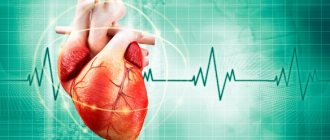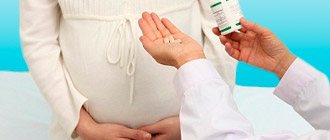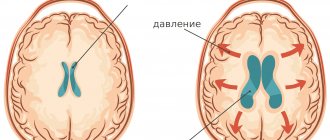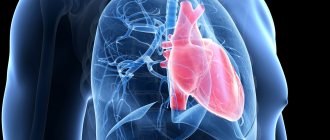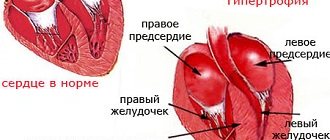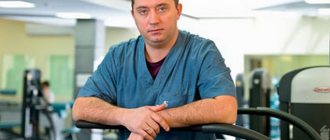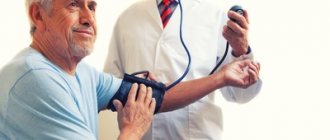Hypertension (essential or primary hypertension) is a chronic disease associated with a long-term and persistent increase in blood pressure (BP).
There are two forms of hypertension (hypertension): primary and secondary. Approximately 90-95% of patients with hypertension have the primary form. Unlike secondary hypertension, primary hypertension does not have a clearly defined known cause. Therefore, its diagnosis is made after ruling out known causes, which include what is called secondary hypertension. For example, blood pressure may increase symptomatically with kidney disease, and so on.
Blood pressure: Blood pressure resulting from the work of the heart, which pumps blood into the vascular system, and vascular resistance.
Blood pressure readings are usually given as two numbers: for example, 120 over 80 (written as 120/80 mmHg).
The top number is called systolic blood pressure (the higher pressure and the first number recorded) - this is the pressure that blood puts on the walls of the artery when the heart contracts to pump it to peripheral organs and tissues. The bottom number is diastolic blood pressure (the lower pressure and the second number recorded) - this is the residual pressure exerted on the arteries when the heart relaxes between beats.
Normal blood pressure is a relative value, which depends on age, physical activity, psychological state, and even on the use of various medications.
Hypertension occurs when the body's smaller blood vessels (arterioles) narrow, causing the blood to put undue pressure on the vessel walls and causing the heart to work harder to maintain the pressure. In this case, blood pressure reaches or exceeds 140/90 mm Hg.
Diastolic blood pressure is more common in people under 50 years of age. As we age, systolic hypertension becomes a more serious problem. At least a quarter of the adult population (and more than half of those over 60) have high blood pressure.
Causes of the disease
Arterial hypertension is a disorder of the cardiovascular system, characterized by an increase in systolic blood pressure (the first digit on the tonometer) above 140 mm Hg.
Art. and/or diastolic (second digit) – above 90 mm Hg. Art. It can occur as an independent disease or result from another pathology. The most common is hypertension or essential hypertension, which develops independently, without obvious reasons. It occurs in 90% of patients with high blood pressure.1
Secondary or symptomatic hypertension is directly related to other diseases or factors that can be controlled.1 This form of the disease is usually suspected in young people under 30 years of age with high blood pressure.
The main causes of secondary arterial hypertension are2:
- Obstructive sleep apnea syndrome.
- Kidney diseases.
- Neoplasms of the adrenal glands – pheochromocytoma.
- Pathologies of the thyroid gland: thyrotoxicosis, hypothyroidism.
- Congenital abnormalities of the heart and blood vessels, including coarctation of the aorta.
- Primary hyperaldosteronism.
- Itsenko-Cushing syndrome.
- Side effects of medications such as: oral contraceptives, non-steroidal anti-inflammatory drugs, antiviral drugs.
Risk factors
There are a number of factors that increase the likelihood of developing hypertension. The most significant include:
- Age. The risk of high blood pressure increases with age, mainly after age 65.
- Hereditary tendency to arterial hypertension.
- Overweight.
- Physical inactivity, lack of physical activity.
- Smoking, including passive smoking.
- Excess salt and potassium-containing foods in the diet.
- Alcohol abuse.
- Chronic stress, frequent emotional stress and lack of sleep.
- Pregnancy.
- Early menopause.
- Heart rate exceeding 80 beats/min at rest.
Diagnostics
The diagnosis of hypertension is made by a cardiologist only after excluding secondary arterial hypertension. Carry out the necessary tests, which include:
- general blood analysis
- general urine analysis
- blood chemistry
- ECG
- ECHOCG
- Ultrasound of the kidneys, adrenal glands, renal arteries, peripheral vessels
- Fundus examination
- 24-hour blood pressure monitoring
Before visiting your doctor, you can optionally undergo a basic heart and vascular examination.
What are the different degrees of hypertension?
Normal blood pressure is considered to be between 110/70 and 130/85 mm Hg. Art., which on average is the well-known 120/80 mm Hg. Art. With arterial hypertension, there is an increase in systolic blood pressure above 140 mm Hg. Art. and/or diastolic above 90 mm Hg. Art.
The degrees of hypertension are determined depending on the systolic (SBP) and/or diastolic (DBP) blood pressure (Fig. 1).
Figure 1. Degrees of hypertension in adults. Source: MedPortal, photo by cottonbro: Pexels
As a rule, at the first stage of development of hypertension, serious structural changes in the internal organs and structures of the body do not yet occur.
If hypertension continues to develop, over time, excessive blood pressure on the walls of the arteries will negatively affect both the blood vessels themselves and the target organs: the brain, retina, heart. The higher the pressure and the longer it remains uncontrolled, the greater the potential threat of decreased visual acuity, deterioration of cognitive abilities, heart pain, etc.
The most significant complications of arterial hypertension are:
- Myocardial infarction.
- Heart failure.
- Loss of visual acuity and blindness.
- Stroke.
- Dementia.
Hypertensive crisis is a complication of arterial hypertension in which blood pressure suddenly rises to 180/120 mmHg. Art. and more. In this case, direct damage to target organs occurs. This condition requires emergency medical care in a hospital setting.
Treatment stories
Case No. 1
Lyudmila, 55 years old. I consulted a cardiologist with complaints of headaches in the occipital region, often accompanied by increased blood pressure, periodic dizziness, weakness, decreased performance, and fatigue. It is known that for five years after menopause, the patient suffers from high blood pressure. The medications prescribed in the clinic at the place of residence were taken by the patient irregularly, only when blood pressure increased and complaints appeared, since no conversation was held about the need for constant treatment of this chronic disease. As a rule, after blood pressure levels normalized, she stopped taking medications on her own. An accountant by profession, he has bad habits such as smoking and a sedentary lifestyle. Family history: mother died at 64 years old, suffered from hypertension, suffered a heart attack, brother suffered a heart attack 47 years ago. After the examination, a treatment regimen was selected for the patient to control blood pressure and cholesterol levels, a diet was selected taking into account the patient’s individual preferences, recommendations for physical activity were given, and psychological assistance was provided in quitting smoking. Based on the results of treatment, after six months of therapy in combination with increased physical activity and changes in eating habits, target blood pressure levels were maintained, there were no pressure surges, headaches disappeared, weakness decreased, and performance increased. Weight reduction from 84 to 75 kg. All biochemical blood parameters also improved - cholesterol, glucose. The patient moved from a high risk group for cardiovascular disease to a low risk group! She notes that she began treatment because it became clear to her why to do it and what the consequences of refusing treatment would be, the need to constantly take medications was explained in detail, and there was an opportunity to constantly seek help if there was a lack of information.
The main thing is not to be left “alone” with the disease! In collaboration with doctors, it is possible to defeat hypertension and learn to live with such a diagnosis without a threat to life!
Case No. 2
Konstantin, 62 years old. I consulted a cardiologist for a preventive examination. He had no complaints and considered himself absolutely healthy. Smokes since age 20. Blood pressure at the reception on the right arm was 130/85 mmHg, on the left arm 140/95 mmHg. An ECG was performed, the results of which revealed left ventricular hypertrophy. An ultrasound examination of the heart was immediately performed and confirmed the presence of left ventricular hypertrophy and enlargement of the left atrium cavity. It was explained to the patient that such changes, as a rule, occur as a result of untreated arterial hypertension, and 24-hour blood pressure monitoring was recommended. According to 24-hour blood pressure monitoring, an increase in blood pressure was detected in the evening and at night, i.e. in those hours when the patient did not measure blood pressure and therefore did not know about the existence of arterial hypertension, nevertheless, he was at risk of a heart attack or stroke! After excluding other causes of increased blood pressure, a diagnosis of stage II hypertension was established, with a high risk of cardiovascular complications. Adequate therapy was selected for the patient; at the control 24-hour blood pressure monitoring after 3 months, the target blood pressure values were maintained throughout the day. The patient is grateful for the quick and comprehensive examination, which made it possible to begin treatment immediately!
Differences between degrees and stages of hypertension
In clinical practice, several classifications of arterial hypertension are used simultaneously. Of key importance is the division of this pathology into degrees and stages of development.1
If the degree is determined depending on the pressure indicators, then the stage of the disease depends on the severity of target organ damage and the presence of clinical conditions associated with high blood pressure, diabetes mellitus and chronic kidney disease. There are 3 stages of arterial hypertension:
- Stage I: There is no end organ damage or associated clinical conditions, but there are associated risk factors. In addition to those previously mentioned, this also includes a number of laboratory indicators: lipid and blood sugar levels, uric acid and others.
- Stage II. There is asymptomatic target organ damage, determined by the results of additional examination and/or stage 3 chronic kidney disease and/or concomitant uncomplicated diabetes mellitus.
- Stage III. The presence of manifesting target organ damage and clinical conditions associated with hypertension, stage 4-5 chronic kidney disease or complicated diabetes mellitus.
Prevention of hypertension development
Prevention of arterial hypertension is divided into primary and secondary. Primary prevention is needed for healthy people—those whose blood pressure does not yet exceed normal levels. The following set of health measures will help not only keep your blood pressure normal for many years, but also get rid of excess weight and significantly improve your overall well-being.
Physical exercise
Any physical exercise in persons with mild and moderate hypertension helps to increase physical performance. Exercises aimed at training endurance (general developmental exercises, breathing exercises, exercise equipment, swimming, walking, running) lead to a noticeable antihypertensive effect. However, during intense physical activity, systolic pressure increases sharply, so it is best to exercise a little (30 minutes) each day, gradually increasing the intensity from light to moderate.
Low salt diet
The amount of table salt should be limited to 5 grams (1 teaspoon) per day. It should be noted that many products (cheeses, smoked and pickled products, sausages, canned food, mayonnaise, chips) themselves contain a lot of salt. So remove the salt shaker from the table and never add salt to ready-made dishes. Replace salt with herbs and garlic. If it is difficult to do without salt, you can purchase salt with a reduced sodium content, the taste of which is almost no different from regular salt.
Limiting animal fats
Gradually replace butter, cheeses, sausages, sour cream, lard and fried cutlets from your diet with additional vegetables and fruits, vegetable oil and lean fish. Prefer low-fat dairy products. This way you can control cholesterol levels in the blood (prevention of atherosclerosis), normalize weight and at the same time enrich your diet with potassium, which is very useful for hypertension.
Rejection of bad habits
Enough has been said about the dangers of tobacco and alcohol. But if you find more than two of the risk factors for hypertension listed above, know that it’s time to be more merciful to your heart and blood vessels. Bad habits and arterial hypertension are a terrible combination, which in most cases leads to tragic consequences.
If the diagnosis of “hypertension” has already been made, a few more points should be added to the above measures. This is the so-called secondary prevention, the main task of which is to protect target organs from negative consequences and avoid the dangerous complications of hypertension - coronary heart disease, heart attack, cerebral stroke.
Psychological relief
Stress is one of the main causes of high blood pressure. That’s why it’s so important to master methods of psychological relief - auto-training, self-hypnosis, meditation. It is important to strive to see the positive sides in everything, to find joy in life, to work on your character, changing it towards greater tolerance for other people’s shortcomings, optimism, and balance. Hiking, sports, hobbies and spending time with pets also help maintain mental balance.
Blood pressure measurement
Blood pressure must be measured daily, and the resulting numbers must be written down in a special notebook, which must be shown to your doctor every 2-3 months. Secondary prevention of hypertension consists of individual selection of appropriate doses of antihypertensive drugs and systematic maintenance of normal or near-normal blood pressure values with their help.
Non-drug therapy
In addition to the already mentioned hypertensive diet, therapy may include breathing exercises, light massage, normalization of sleep, adherence to a daily routine, taking natural and synthetic vitamins, antioxidants, nutritional supplements and restorative herbs. In short, it’s worthwhile to “improve” your lifestyle as much as possible.
Symptoms of stage 1 hypertension
Clinical manifestations of stage 1 hypertension often go unnoticed or are completely absent, since the body’s compensatory capabilities neutralize a slight increase in blood pressure.3 Because of this, the disease is often called the “silent killer.”
If high blood pressure levels persist for a long time, nonspecific symptoms may appear, including:
- Throbbing or pressing headache with the epicenter in the occipital region.
- Tinnitus and dizziness.
- Flashing "flies" before the eyes.
- Increased and rapid heartbeat.
- Nosebleeds.
- Poor exercise tolerance and shortness of breath.
- Swelling of the lower extremities, numbness in the legs.
Features of the course of hypertension with heart damage
A prolonged or particularly malignant course of the disease affects the heart muscle. Initially, myocardial hypertrophy develops - with the help of this, the heart tries to compensate for the excess load. Without treatment or if it is insufficiently effective, as well as with irregular medication use, the following types of heart damage may develop:
- angina pectoris - acute pain in the heart caused by a lack of oxygen;
- heart attack - an extreme degree of coronary artery disease, manifested by necrosis of the heart muscle;
- acute left ventricular failure - manifested by cardiac edema.
When should you see a doctor?
In most cases, arterial hypertension is detected during a routine examination or seeking medical help for another disease or condition. Therefore, if there are risk factors, regular visits to your family doctor or primary care physician are recommended.
An unscheduled consultation or call to emergency medical services is required in the following situations:
- Decreased effectiveness of medications taken – situations where previously effective antihypertensive drugs no longer work.
- Increased blood pressure during treatment.
- The appearance of side effects from drug therapy.
- Deterioration of general condition while maintaining current blood pressure numbers.
- A sharp increase in blood pressure to more than 180/120 mmHg. Art., that is, the development of a hypertensive crisis.
- A sudden decrease in systolic or diastolic blood pressure of 30 mm Hg. Art. and more.
Treatment methods for hypertension
The main goal of treating hypertension is to reduce the risk of developing the most dangerous complications (stroke, myocardial infarction, chronic renal failure and nephrosclerosis). To this end, measures are being taken to reduce blood pressure to normal levels and reduce the vulnerability of target organs. The patient needs to be prepared that antihypertensive therapy will be carried out for life. The course of treatment at stages II and III of the disease necessarily includes drug therapy. Treatment of stage I hypertension may not require medications, but may be limited only to non-drug therapy methods. In any case, non-drug therapy for hypertension is very important.
A patient with hypertension should regularly measure blood pressure and follow all instructions of the attending physician.
Modern diagnostic methods
24-hour blood pressure monitoring can help diagnose hypertension.
Photo: Minaart / Depositphotos The diagnosis is often made based on blood pressure readings obtained from tonometry and patient interview data.
In order to identify potential causes, as well as to assess risks to human health and select the most appropriate treatment regimen, a number of laboratory and instrumental studies are additionally carried out.
The examination program for a patient with arterial hypertension includes:
- Laboratory tests. This includes routine general blood and urine tests, as well as determination of a number of biochemical parameters, including: blood glucose, uric acid, sodium and potassium levels, total cholesterol and high and low density lipoproteins (HDL-C, LDL-C), serum creatinine blood followed by calculation of glomerular filtration rate (GFR).1
- Instrumental diagnostics. For patients with newly diagnosed arterial hypertension, in order to exclude white coat hypertension (increased pressure as a result of fear or “tremor” in front of the doctor), 24-hour blood pressure monitoring with simultaneous recording of an electrocardiogram (ECG) according to Holter is recommended. Also, if necessary, ECHO-CG, ultrasound diagnostics of the kidneys, duplex scanning of the vessels of the kidneys, head and neck, fundus examination (ophthalmoscopy), computed tomography or magnetic resonance imaging (CT or MRI) of the brain are performed.1
1. Diagnosis of high blood pressure
Diagnosis of high blood pressure, or hypertension, involves taking a medical history and directly examining the patient. Your doctor's specific questions and tests will depend on how high your blood pressure is and whether you have other risk factors for heart disease. Some patients may require more detailed diagnostic testing or even a comprehensive cardiac evaluation.
To diagnose hypertension, your doctor may:
- Ask about your family history of hypertension, assess risk factors for high blood pressure - for example, heredity or smoking.
- Measure your blood pressure two or more times. Measurements can be taken on the left or right arm, on the leg and, for example, in different positions - sitting, lying or standing. This will help you get a more accurate idea of your blood pressure.
- Measure your weight, height and waist circumference.
- Check the retina and the condition of the back of the eye.
- Check your heart function (at a minimum, listen to the rhythms).
- Examine the abdomen with a stethoscope. Listening to the vessels in the abdomen will help you hear abnormal sounds, which may be caused by obstruction of blood flow due to a narrowing of the artery in the abdomen.
- Examine the neck to detect an enlarged thyroid gland, distension of the jugular veins and carotid artery.
A must read! Help with treatment and hospitalization!
Features of treatment. Conservative therapy
Treatment tactics depend on the results of previous diagnostics and laboratory parameters, as well as the risk of developing cardiovascular complications. However, in the conservative treatment of arterial hypertension of the 1st degree, a key place is occupied by lifestyle correction, which, if necessary, can be supplemented with pharmacotherapy.
Lifestyle changes: tips for patients with hypertension
The first and one of the most important aspects in the treatment of arterial hypertension and the prevention of complications is changing a person’s behavior and habits, aimed at eliminating or minimizing risk factors. Recommendations for patients with hypertension include7:
- Quitting the consumption of alcoholic beverages and tobacco products.
- Rational, balanced nutrition. In this case, preference should be given to fruits and vegetables, whole grains and fish, avoiding foods high in salt and trans fats.
- Normalization of body weight, treatment of obesity.
- Maintaining moderate physical activity, neck exercises, massages.
- Limit your intake of sugar and high carbohydrate foods.
- Avoiding frequent stress.
- Normalization of the daily routine, ensuring adequate sleep.
What foods should you not eat if you have high blood pressure?
Eating certain foods that increase blood pressure can be dangerous if a person already has hypertension. In this case, follow a special diet, excluding or limiting the use of:
- salts, seasonings and food additives containing sodium;
- strong tea, coffee containing caffeine;
- fatty, fried, spicy foods;
- pickles and canned foods;
- smoked meats;
- baked goods, sweets;
- fast food;
- sweet carbonated drinks;
- frozen semi-finished products: pizza, dumplings (may contain a lot of sugar, sodium, saturated fat to preserve taste);
- alcohol.
One of the tools for monitoring your condition is the so-called pressure diaries. They should record your systolic and diastolic blood pressure readings every day, adding comments regarding your well-being if necessary.
Also, do not miss follow-up visits to the doctor. In this way, the doctor will be able to monitor the effectiveness of the treatment prescribed and, if necessary, make adjustments or replace insufficiently effective medications.
How to measure blood pressure using a mechanical tonometer
In order to measure pressure with a mechanical tonometer (video 1), you need:
- sit in a comfortable position and relax, while your arm should be bent at the elbow joint and lie on a flat surface,
- remove the shoulder part of the arm from clothing and fasten the cuff on it (its lower edge should be 3-4 cm above the elbow bend),
- place a stethoscope (phonendoscope) on the inside of the elbow joint in the place where the pulse can best be felt,
- using a hand pump, start pumping air into the cuff,
- bring the pressure gauge needle to values exceeding the expected pressure by 30-40 mm. rt. Art. (for example, if the patient’s normal blood pressure is 135/90, then you can stop at 170),
- slowly release air from the cuff, waiting for tones to appear - these are the sounds of a heartbeat; their appearance marks the boundary of systolic pressure, and their disappearance marks the boundary of diastolic pressure. Simply put, if tones appeared at number 150 and disappeared at number 100, then the result is 150/100).
Video 1. How to correctly measure pressure with a mechanical tonometer.
Drug treatment
Drug therapy is usually prescribed if lifestyle changes have not normalized blood pressure within 3 months.1 Depending on the presence of structural changes in target organs and the risk of complications, one or more drugs may be used. The main means are:
- Angiotensin-converting enzyme inhibitors (ACE inhibitors): captopril, ramipril. They help relax blood vessels, blocking the formation of ACE, a chemical that constricts them.
- Angiotensin II receptor blockers: valsartan, losartan. These medications relax the blood vessels, blocking the action rather than the formation of ACE.
- Calcium channel blockers: verapamil, nifedipine. They relax blood vessels and can also slow down the heart rate. Often prescribed to elderly people.
- Diuretics. There are different classes of diuretics, including thiazide (hydrochlorothiazide), loop (furosemide), and potassium-sparing (triamterene).
- β-blockers: atenolol, bisoprolol. They reduce the strength and frequency of heart contractions, also dilating blood vessels.
Additional agents that can be used as adjuvant therapy in certain situations2:
- α-blockers: doxazosin, prazosin. Suppress nerve signals traveling to blood vessels, reducing the effect of natural chemicals that narrow them.
- Aldosterone antagonists: spironolactone, eplerenone. They block the action of aldosterone, which is responsible for maintaining salt and fluid in the body and can contribute to increased blood pressure.
- Vasodilators: hydralazine and minoxidil. They act directly on the muscles of the artery walls, preventing their contraction.
- Renin inhibitors: aliskiren. They slow down the production of renin, a kidney enzyme that triggers a chain of chemical reactions that increases blood pressure.
Important! When using drug treatment, you should clearly know the areas of application of a particular drug recommended by your doctor. Some medications should be taken regularly, regardless of blood pressure readings and even in situations where the numbers are within the normal range. Other medications are used only when necessary, for example, when there is a sudden increase in blood pressure and a deterioration in general condition. It is better to always have such drugs with you.
What to do during a hypertensive crisis?
Vivid symptoms of hypertension usually occur with a sharp rise in blood pressure - the development of a hypertensive crisis. When the pressure rises above 220/120 mmHg. Art. and/or the appearance of symptoms of a complicated crisis (severe weakness, nausea, vomiting, visual disturbances, acute headache, heart pain, impaired speech or consciousness, limitation of movements in the limbs), it is necessary to urgently call emergency help.
Emergency actions in this situation boil down to ventilating the room, maintaining bed rest, maintaining a calm environment, and taking antihypertensive drugs (Fig. 2).
Figure 2. First aid for hypertensive crisis. Source: MedPortal
FAQ
On what basis can one assume that I will develop hypertension?
Risk factors for the development of hypertension include: smoking, obesity, sedentary lifestyle, high cholesterol, diabetes mellitus, age over 55 for men and 65 for women, and, of course, heredity - early onset of cardiovascular diseases in blood relatives (in men under 55 years of age and women under 65 years of age, respectively). If the above risk factors are present in your life, you should visit a cardiologist for examination and treatment if necessary.
They say that hypertension can be controlled with diet. What dietary principles should you follow to maintain normal blood pressure?
Scientists have long noticed that there are far fewer cases of hypertension among vegetarians. They tend to have healthier hearts. What is the difference between the diet of vegetarians and other people? They eat a lot of vegetables and fruits, which are rich in minerals that are good for the cardiovascular system. This is, first of all, potassium, as well as magnesium and calcium. Since vegetarians do not eat meat or other animal products, their bodies receive less saturated fat and cholesterol. The DASH diet (Dietary Approach to Stop Hypertension) is a specially designed nutrition program for hypertension, similar to vegetarianism, but with the preservation of meat in the diet. This diet excludes the consumption of foods that increase blood pressure.
If you follow the DASH diet strictly for several months and then get a cholesterol blood test, you will see that your total cholesterol and low-density lipoprotein (LDL, or “bad”) cholesterol levels in your blood have decreased.
The daily diet according to the DASH diet includes the following foods:
- 7-8 servings of bread and cereal products
- 4-5 servings of vegetables
- 4-5 servings of fruit
- 2-3 servings low-fat or low-fat dairy products
- 2 or fewer servings of meat or fish products
- 2.5 servings of fat
- 4-5 servings of nuts, seeds or legumes
- 5 servings of sweets per week, including 1 tablespoon sugar, 1 tablespoon jelly or jam, 15 grams of gummies, or a glass of lemonade
And, of course, you should limit your salt intake to 5 g per day.
Compliance with these recommendations ensures a reduction in pressure by 5–15 mmHg. Art., which is essentially equal to the effect of one antihypertensive drug.
A nutritionist will describe the menu in more detail during your consultation.
I have hypertension. Which tonometer is best to use to monitor your blood pressure at home?
Currently, there are many devices that are used to monitor blood pressure levels. You should choose devices with automatic pressure measurement (“full automatic”) and those with a cuff placed on the shoulder. The device must be powered via a power adapter. This way the resulting blood pressure values will be more accurate. It is known that people who monitor their blood pressure are treated with better results and, with a certain skill, can themselves take measures to timely reduce suddenly rising pressure.
How long should you take hypertension medications? After all, in addition to heart problems, I have other health problems, and I have to take a lot of medications...
Since hypertension is a chronic disease, it is necessary to take medications constantly, without interruptions.
There are combination dosage forms that contain two or more drugs in one tablet, and you may find it more convenient to use them. Consult your healthcare provider. You should also evaluate how much you need medications to treat your other conditions. Perhaps their therapy can be optimized.
I was diagnosed with hypertension, does this mean that I will definitely have a heart attack, what are the risks?
With timely and adequate treatment that achieves target blood pressure levels, the likelihood of developing such serious complications as a heart attack or stroke will be minimized. To do this, you need to consult a cardiologist to select therapy, and then undergo regular examinations.
Is there an age norm for blood pressure?
Normally, blood pressure numbers should not be higher than 140/90 mm Hg, for people over 60 years old - no higher than 150/90 mm Hg.
Folk remedies against hypertension
Ginger tea is beneficial for people with high blood pressure.
Photo: jcomp - ru.freepik.com In addition to drug therapy, traditional methods of treatment can be effective adjuncts. They include a variety of tinctures and decoctions from various plants, roots, leaves or berries. The following have a proven antihypertensive effect:
- Ginger tea.
- Ginseng infusions and teas.
- Foot compresses with apple cider vinegar.
- Decoctions with sunflower seeds.
- Pomegranate juice.
- Dark chocolate (containing at least 60-70% cocoa, in moderation) and cocoa.
- Celery juice.
- Garlic.
- White mistletoe decoction.
- Dietary supplements or foods that increase nitric oxide or dilate blood vessels (vasodilators), such as: cocoa, coenzyme Q10, L-arginine.
- Omega-3 fatty acids found in oily fish, high fish oil supplements and flax seeds.
Various procedures can also help reduce high blood pressure, including massage courses for the back and collar area, contrasting water procedures for the feet and hands, etc.5, 6
Important! Traditional medicine cannot be the only method of treatment. Also, many medicinal plants contain biologically active substances that can cause adverse reactions. Therefore, before using them, you should definitely consult a doctor.
Other studies
ECG (every six months) . It is necessary to monitor the heart rate and rhythm, and assume an increase in the size of various parts of the heart. Due to increased blood pressure, the main chamber of the heart, the left ventricle, begins to thicken, this is called left ventricular hypertrophy. In a hypertrophied heart, rhythm disturbances are more likely to occur, and heart failure may occur due to heavy workload.
Ultrasound of the carotid arteries (once a year) . If the doctor sees thickening of the wall of the carotid artery, this indicates that the condition of the blood vessels is changing, an atherosclerotic plaque begins to form, which means the risk of stroke increases.
Examination by an ophthalmologist (once a year) . The eyes also suffer from high blood pressure. Severe hypertension can cause damage to the retina, optic nerve, and blood vessels in the eyes.
Forecast
With arterial hypertension of the 1st degree, as a rule, it is possible to avoid a further increase in blood pressure without the use of pills - by eliminating risk factors and changing a person’s lifestyle.
However, sometimes it is impossible to do without appropriate antihypertensive therapy and drug treatment. Taken together, following simple rules of behavior and regularly taking pills allows you to most effectively control the condition and prevent the development of serious complications such as myocardial infarction or stroke.
Treatment
The goal is to reduce cardiovascular morbidity and mortality by normalizing blood pressure numbers. Treatment includes lifestyle changes (salt-free diet, quitting smoking and alcohol, physical activity) and drug therapy, which may include both taking tablets and IVs.
At the EXPERT Clinic, patients have the opportunity to receive a full consultation with a cardiologist and nutritionist on lifestyle changes and modification of risk factors. If necessary, treatment in a day hospital under the supervision of experienced medical personnel is possible.
Sources
- Russian Cardiological Society. Clinical guidelines “Arterial hypertension in adults”, 2021.
- High blood pressure (hypertension). Mayo clinic. 2021.
- T. V. Ashcheulova, T. N. Ambrosova, V. I. Smirnova. “The main symptoms and syndromes of hypertension and symptomatic arterial hypertension: method. decree. for students” / comp. – Kharkov: KhNMU, 2021. – 32 p.
- Tabassum N, Ahmad F. Role of natural herbs in the treatment of hypertension. Pharmacogn Rev. 2011;5(9):30-40.
- Givi M. Durability of effect of massage therapy on blood pressure. Int J Prev Med. 2013;4(5):511-516.
- Mohebbi Z, Moghadasi M, Homayouni K, Nikou MH. The effect of back massage on blood pressure in the patients with primary hypertension in 2012-2013: a randomized clinical trial. Int J Community Based Nurses Midwifery. 2014;2(4):251-258.
- Marjorie Hecht "Types and Stages of Hypertension". Healthline. 2019.
Why is hypertension dangerous?
The heart pumps blood through the blood vessels, providing all the body's cells with oxygen and nutrients. When blood vessels become clogged or lose their elasticity, the heart begins to work harder and increases the pressure inside the vessels.
Against the background of the disease, if not treated in a timely manner, serious pathologies such as acute heart failure, hypertensive crisis, stroke, and myocardial infarction can occur.
The difficulty of hypertension is that it often remains virtually asymptomatic for years and the person does not know about the existence of the disease. Symptoms are often observed - headache, fatigue, memory loss, dizziness, high blood pressure, to which a person simply does not pay attention. This may indicate the beginning of the development of the disease.


